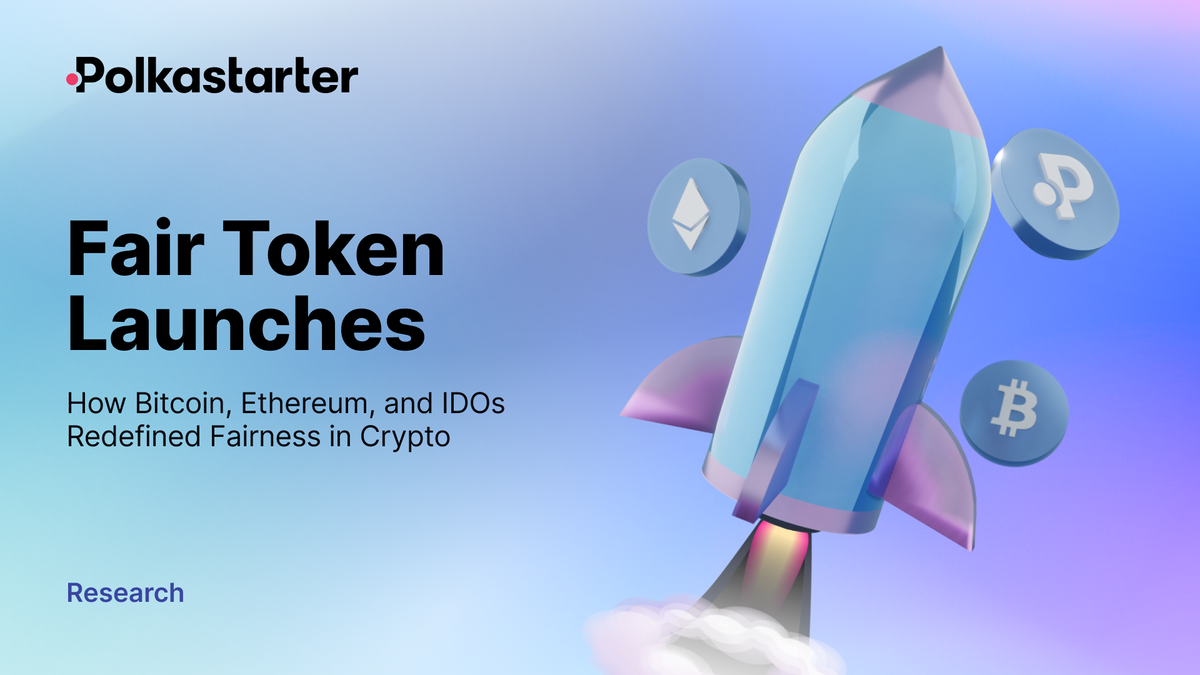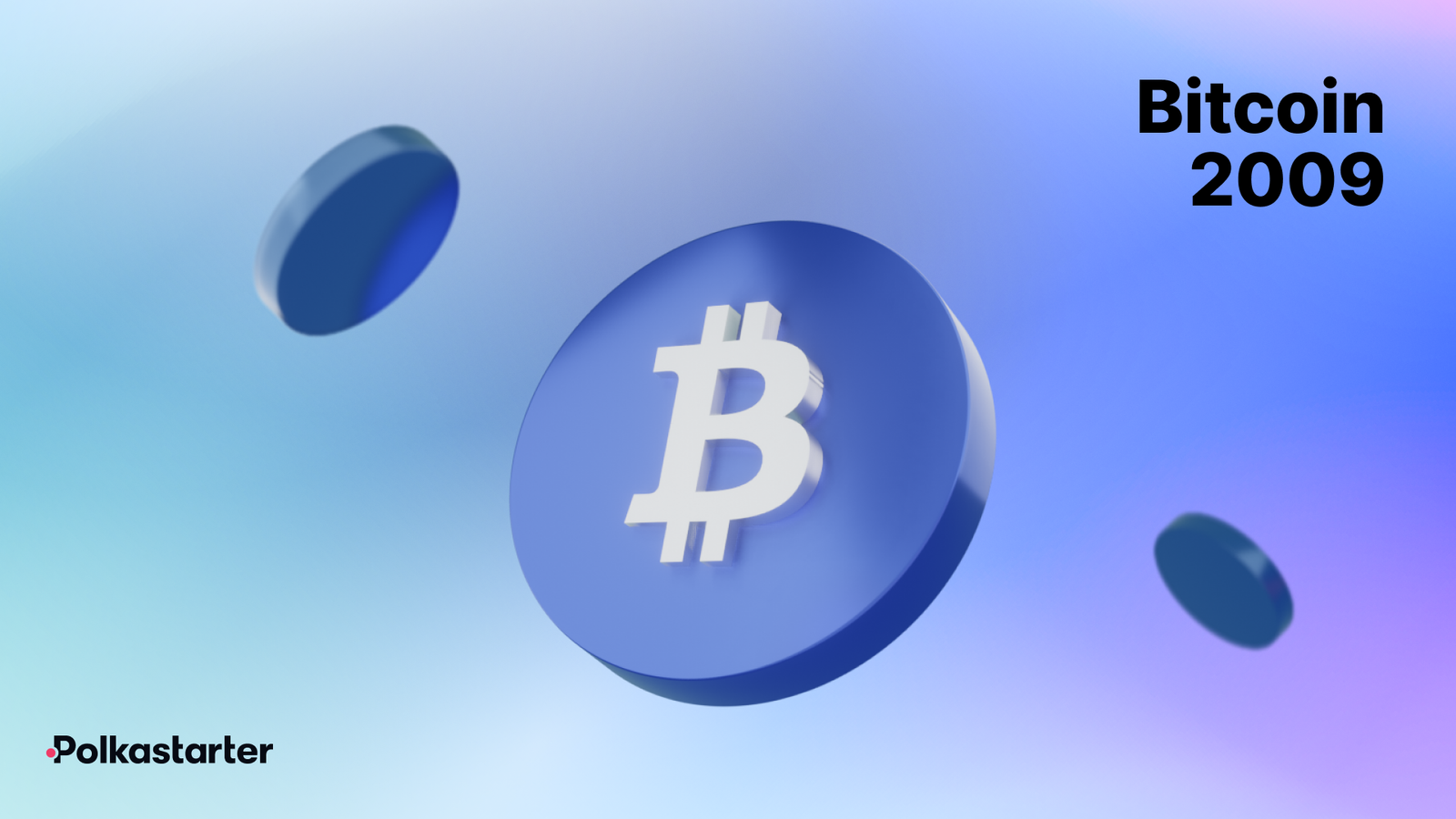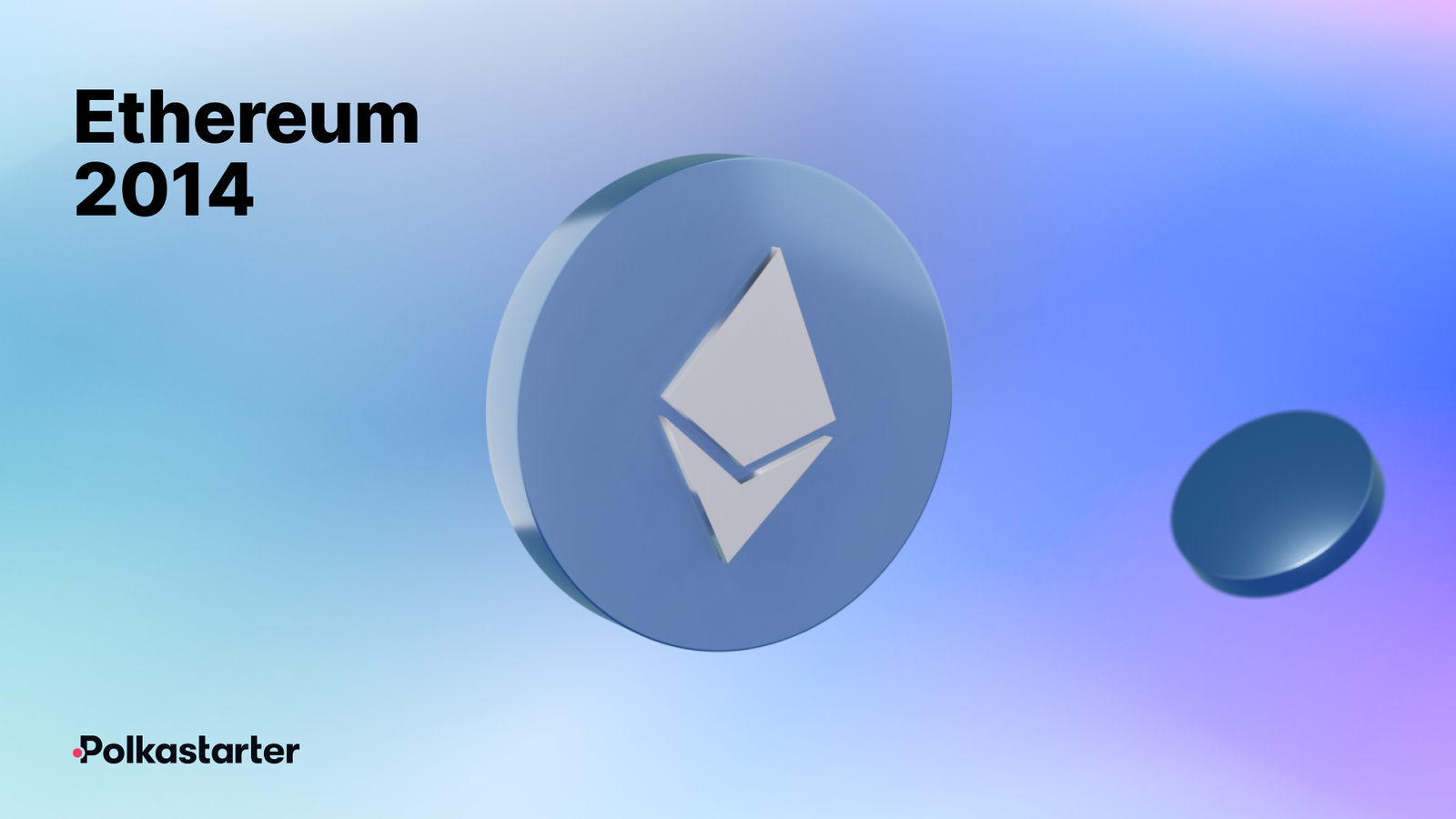Fair Token Launches: How Bitcoin, Ethereum, and IDOs Redefined Fairness in Crypto
By Polkastarter • 6 Feb 2024View in browser One of the ideals of crypto is to redistribute wealth transparently, with no party having a hidden or asymmetric advantage.
One of the ideals of crypto is to redistribute wealth transparently, with no party having a hidden or asymmetric advantage.
A “fair launch” is a loosely applied industry term describing token distributions following the transparency principle, both during the initial launch and throughout future unlocks of a given token.
Designing a fair token model to align the motives of all stakeholders is a daunting task. After all, what does it even mean for a launch to be 'fair'?
Instead of rigidly labeling launches as fair or unfair, it may be valuable to assess fairness on a gradient.
In this article, we explore, aim to define, and understand, what a fair token launch really is.Let’s dive in… 🤿
(Brief) History of Fair Launches
The standard for fair launches was set by the first cryptocurrency – Bitcoin.
Bitcoin
 In 2009, Satoshi Nakamoto mined the genesis block of the Bitcoin blockchain, earning 50 $BTC in the process (identity technically unconfirmed, Sergio Demian Lerner refers to this first miner as “Patoshi”). Since then, all $BTC tokens have been distributed the same way: through the PoW system, with a gradual decrease in the reward allocated per block.
In 2009, Satoshi Nakamoto mined the genesis block of the Bitcoin blockchain, earning 50 $BTC in the process (identity technically unconfirmed, Sergio Demian Lerner refers to this first miner as “Patoshi”). Since then, all $BTC tokens have been distributed the same way: through the PoW system, with a gradual decrease in the reward allocated per block.
With no special treatment from token allocations, the $BTC distribution model is commonly considered fair. That being said, even ‘the standard’ had a small catch.
The only advantage the first miner had was in knowing the network, making them best suited to mine blocks. This mining advantage ended up rather material, and ‘Satoshi’ is thought to have mined up to 1.1 million BTC from a single miner.
Litecoin
 2 years later, in 2011, Charlie Lee created Litecoin.
2 years later, in 2011, Charlie Lee created Litecoin.
Lee noticed that many projects were failing at the time, which he attributed to their unfair advantage in premining tokens before the public launch. A ‘premine’ is when a project creates tokens beforehand and thus not all tokens are mined causing inflation.
Wanting to create the fairest token launch to date, he made sure Litecoin gained sufficient public interest and attention before the blockchain's inaugural launch, hoping to remove any information asymmetries.
Premines in the early stages of the industry were very controversial and perceived by some as unfair. Despite this, today, practically all new ventures have a premine that they use to kickstart the project.
Ethereum
 In 2014, Ethereum premined tokens, allocating 12M $ETH to the Ethereum Foundation and publicly raising $18.3M by selling 60M $ETH.
In 2014, Ethereum premined tokens, allocating 12M $ETH to the Ethereum Foundation and publicly raising $18.3M by selling 60M $ETH.
Vitalik Buterin, Ethereum’s founder, argued that the public sale premine ensured broader access to tokens, beyond miners operating expensive mining equipment.
Premine essentially created fairer $ETH access to more participants. However, discussion arose around the part of the premined tokens being allocated to the team, including Vitalik himself.
ERC-20 and ICOs
 The ERC20-enabled ICO era and the following years put the ideals of fairness to the test as it was suddenly very easy to issue a new token, without the need to launch a new blockchain.
The ERC20-enabled ICO era and the following years put the ideals of fairness to the test as it was suddenly very easy to issue a new token, without the need to launch a new blockchain.
As more external VC capital entered the space and more projects were launched, the need for token launches to generate ROI increased dramatically.
Tokens were no longer just a tool to reward future contributions but also the investments of time and energy from the past. Allocation pie charts and complex vesting schedules very quickly became the norm.
DeFi summer and the last cycle
 In the previous cycle, there were few launches that emphasized fairness.
In the previous cycle, there were few launches that emphasized fairness.
Among noteworthy examples, Yearn, a DeFi protocol launched in 2020, had all tokens allocated to liquidity miners.
Another notable example is Grin, a 2019-launched privacy-preserving digital currency based on the PoW consensus mechanism. This launch was (again) controversial and many cited the high level of institutional interest as making it practically infeasible for smaller miners to compete.
However, many also defended its fairness, praising the transparency and curated PoW algorithm, noting that lengthy issuance gave everyone a fair shot – as discussed in this commonly referenced article by Arjun Balaji and Hasu.






































